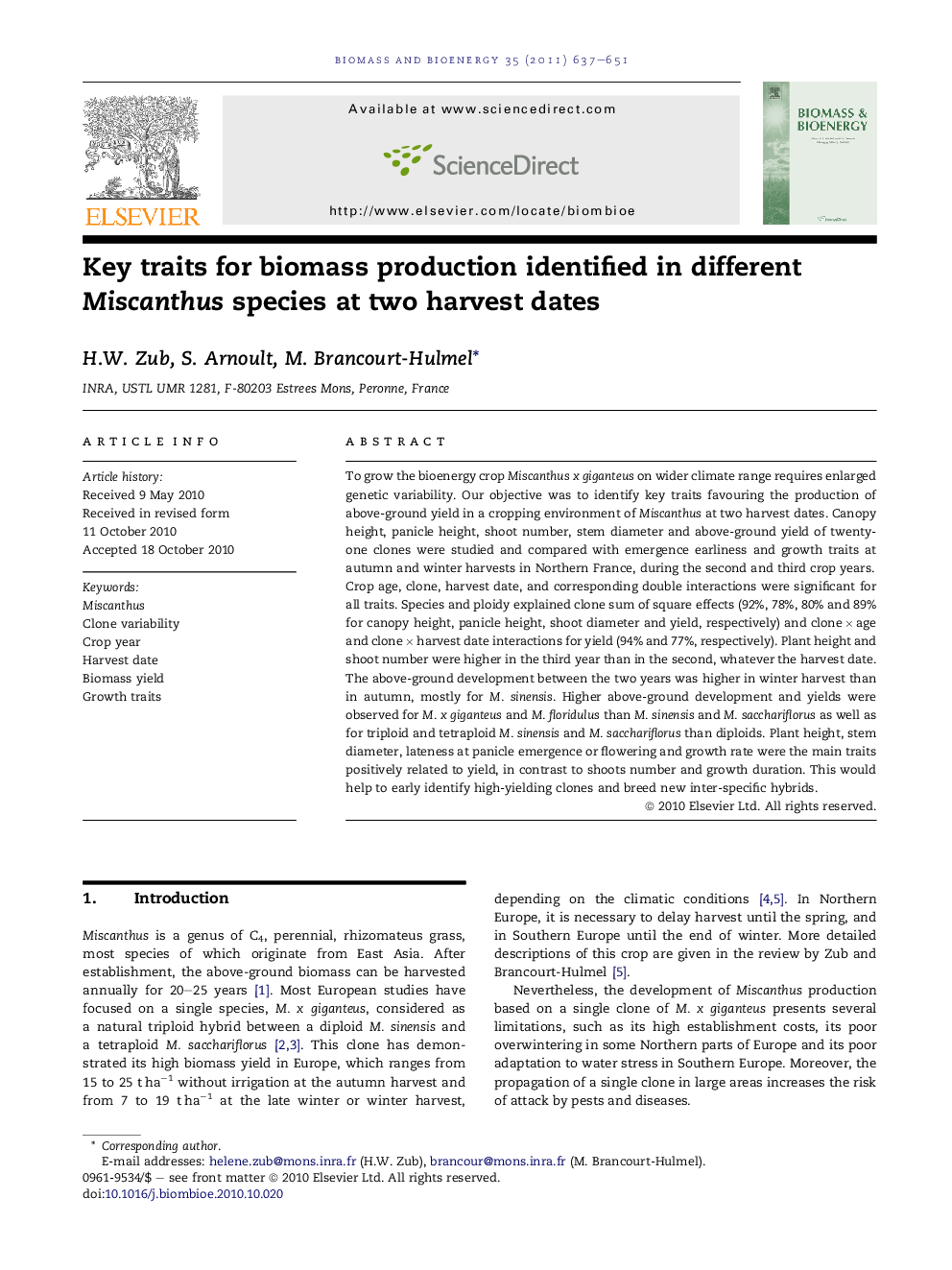| Article ID | Journal | Published Year | Pages | File Type |
|---|---|---|---|---|
| 678122 | Biomass and Bioenergy | 2011 | 15 Pages |
To grow the bioenergy crop Miscanthus x giganteus on wider climate range requires enlarged genetic variability. Our objective was to identify key traits favouring the production of above-ground yield in a cropping environment of Miscanthus at two harvest dates. Canopy height, panicle height, shoot number, stem diameter and above-ground yield of twenty-one clones were studied and compared with emergence earliness and growth traits at autumn and winter harvests in Northern France, during the second and third crop years.Crop age, clone, harvest date, and corresponding double interactions were significant for all traits. Species and ploidy explained clone sum of square effects (92%, 78%, 80% and 89% for canopy height, panicle height, shoot diameter and yield, respectively) and clone × age and clone × harvest date interactions for yield (94% and 77%, respectively). Plant height and shoot number were higher in the third year than in the second, whatever the harvest date. The above-ground development between the two years was higher in winter harvest than in autumn, mostly for M. sinensis. Higher above-ground development and yields were observed for M. x giganteus and M. floridulus than M. sinensis and M. sacchariflorus as well as for triploid and tetraploid M. sinensis and M. sacchariflorus than diploids. Plant height, stem diameter, lateness at panicle emergence or flowering and growth rate were the main traits positively related to yield, in contrast to shoots number and growth duration. This would help to early identify high-yielding clones and breed new inter-specific hybrids.
